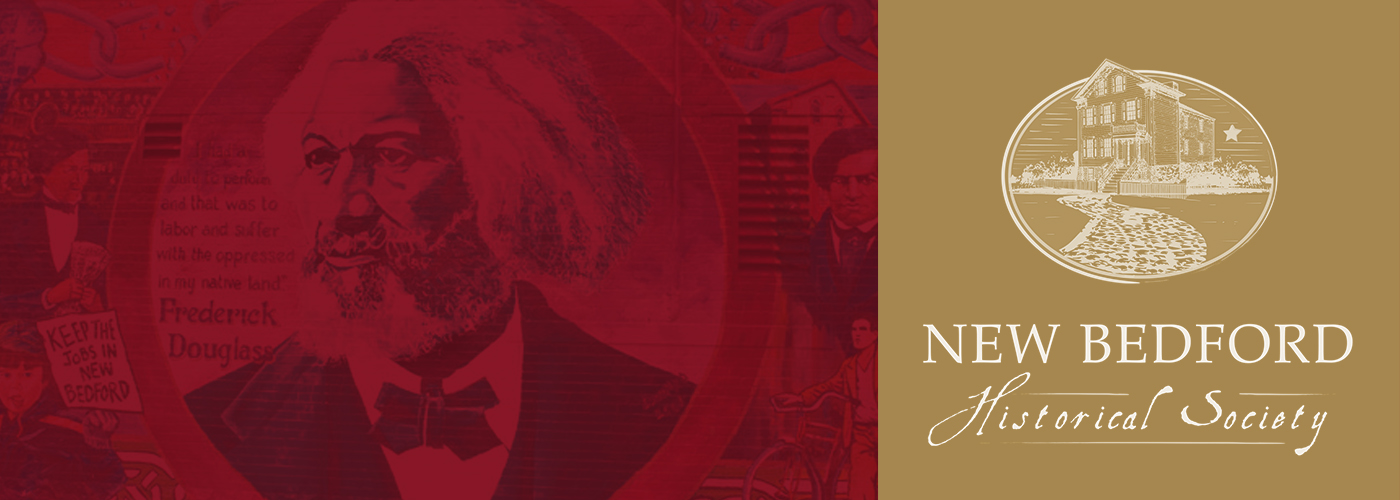The New Bedford Historical Society Inc. was founded in October 1996 and awarded 501(c)(3) status in September 1999 as a not-for-profit organization dedicated to documenting and celebrating the history, legacy and presence of African Americans, Cape Verdeans, Native Americans, West Indians and other people of color in New Bedford, Massachusetts. We are an all-volunteer grassroots organization.
For the past 18 years the New Bedford Historical Society has worked to celebrate the history and culture of people of color, adding much to the cultural landscape of the Greater New Bedford area through our special events and educational programming. Our members have been important voices and advocates as we assist community residents to tell their stories and document the history of the Native peoples, African Americans, Cape Verdeans, and others who made New Bedford their home. The Society has been a leader in providing educational programs for community members and children in area schools so that they too can be proud of the role their family members have had in the development of the history of New Bedford.
We are proud of the historic milestones and grateful for the interest in supporting the New Bedford Historical Society in its mission to ensure that current and future generations know of the amazing events and the people that have shaped our nation’s democracy. Our members hope to preserve the legacy of our forefathers and mothers, who through their bravery, ingenuity and zeal advanced the cause of freedom.
- Over the past several years the New Bedford Historical Society has:
- Designed and participated in teacher professional development workshops for area K-12 teachers at the University of MA Dartmouth. Workshops have focused on New Bedford’s African American History, the Underground Railroad, and local abolitionist activities of the 19th century.
- Assisted in organizing the Massachusetts Underground Railroad Network that links New Bedford with sites in Lowell, Holyoke, Brockton, Boston, etc, in order to better tell the story of the role of our state in the flight to freedom of hundreds of fugitive slaves.
- Presented walking tours of Underground Railroad sites in New Bedford and other points of historic interest for groups. Groups have included AHA! participants, Boys and Girls Scout troops, Bristol Community College students and teachers, and many student groups from the New Bedford Public Schools.
- Created Hidden History, an out-of-school program and summer program for middle school students that shines a light on local history and culture while teaching tolerance and respect for cultural and racial diversity.
- In celebration of African American History Month, held the 14th Annual Read-a-thon of Frederick Douglass’ biography, Narrative of the Life of Frederick Douglass, An American Slave (1845).
- Completed phase I of a $200,000 interior restoration of the Nathan and Polly Johnson House, a National Historic Landmark noted for its link to the Underground Railroad and as the first free home of Frederick Douglass, 19th Century abolitionist.
- Co-sponsored with the University of MA-Dartmouth 3 National Endowment for the Humanities Landmarks in American History bringing teachers from around the country for the past 4 years to study New Bedford’s African American community and their role in the Underground Railroad and the movement for the abolition of slavery.
The Historical Society is pleased to look back over an array of accomplishments made possible by its members and friends.
The Nathan and Mary (Polly) Johnson House
In December 1998, the Society acquired the Nathan and Polly Johnson House at 21 Seventh Street in New Bedford. From the early years of the 19th century until the onset of the Civil War, this building was an important stop on the Underground Railroad for many escaped slaves who later became residents of New Bedford or passed through the City on their way to points further north and to freedom. The Johnson’s were prosperous African Americans who were well known for their extensive work in the anti-slavery movement. Their home was the base for the couple’s catering and confectionary business. In addition, the Johnson’s were instrumental in assisting Frederick Douglass as he settled into his new life in New Bedford as a free man after escaping slavery in 1838. The Nathan and Polly Johnson House is the only remaining structure in which Frederick Douglass lived during his seven years in New Bedford (1838–45). Through the work of the New Bedford Historical Society, the Nathan and Polly Johnson House was designated a National Historic Landmark by the Secretary of the Interior in 2000, one of a select few properties in New Bedford that has won this status.
The Society is currently working to restore and renovate the Johnson House to serve as a museum and exhibit space highlighting the contributions of people of color. Our members seek to establish a solid base of research and educational programs that present the contributions of people of color as part of the life and history of the region as well as a part of the permanent, public record. In the process, the history of the region in general will become fuller, deeper, and richer for everyone.
Preserve America Award
 Since 1996, the New Bedford Historical Society has been working to preserve and celebrate the heritage of African Americans, Cape Verdeans, Native Americans, West Indians, and other people of color in New Bedford, Massachusetts. One of the group’s signature accomplishments has been the acquisition and preservation of the Nathan and Mary Johnson House. Home to antebellum African American entrepreneurs and an Underground Railroad site, it also was the first home of abolitionist Frederick Douglass upon his escape from slavery.
Since 1996, the New Bedford Historical Society has been working to preserve and celebrate the heritage of African Americans, Cape Verdeans, Native Americans, West Indians, and other people of color in New Bedford, Massachusetts. One of the group’s signature accomplishments has been the acquisition and preservation of the Nathan and Mary Johnson House. Home to antebellum African American entrepreneurs and an Underground Railroad site, it also was the first home of abolitionist Frederick Douglass upon his escape from slavery.
Now the Society’s headquarters, the Johnson House had been slated for demolition before being purchased by the Society. Society volunteers researched the house and completed the nomination application that culminated in the property being designated as a National Historic Landmark. Recent renovation of the main floor of the house has made the house available for community meetings and educational presentations.
The Johnson House is featured on an Underground Railroad walking tour that Society volunteers developed in conjunction with the New Bedford Whaling National Historical Park. For 15 years, the Society and the National Park Service (NPS) have partnered in educational programming and special events. The Society and NPS provide training for docents and have collaborated on curriculum materials for teachers.
Past Accomplishments
Historical Society members have helped organize “Portraits of a Port: New Bedford, 1847-1947” a summer teachers’ institute at the New Bedford Whaling Museum, and have been lecturers in the “Parks as Classrooms” curriculum in New Bedford public schools and at the Massachusetts Statewide Historical Preservation Conference.
Acquired the endangered nineteenth-century Nathan and Polly Johnson house, home of two of the city’s most active black abolitionists and trades people. The Society also prepared a National Historical Landmark nomination for the structure and is working with consultants on its preservation and reuse as exhibition space and Society headquarters.
Spurred the development in New Bedford’s historic district of the 54th Regiment Massachusetts Volunteer Infantry Plaza, dedicated in February 1999 to honor black Civil War troops in the 54th and 55th Regiments and the U.S. Navy.
Sponsored “Presenting Mr.’ Fredrick Douglass,” a one-man, two act play by acclaimed actor Fred Morsell, in conjunction with the New Bedford Public Schools. For a week Morsell gave daily performances in city schools and a final, free public performance at New Bedford’s Zeiterion Theater.
Initiated “Remembering the West End,” an ongoing oral history project to document this New Bedford neighborhood, long a center of community life among people of color.
Initiated The Cape Verdean Film Festival, a weeklong festival in 1998 and the first event of its kind ever held in the United States.
Created The Heritage Trail, a guided tour of sites significant in the history of people of color in New Bedford, including principal Underground Railroad sites.
Developed Frederick Douglass: The New Bedford Years, 1838-1843, which opened at the New Bedford Art Museum August 1, 1998, and is now a traveling exhibition.
Sponsored the showing in New Bedford of Jacob Lawrence: The Frederick Douglass and Harriet Tubman Series of Narrative Paintings, a traveling exhibition from Hampton University Museum.
Cosponsored Faces of Whaling, the first local exhibition ever mounted on whale men of color, and aided New Bedford Whaling National Historical Park in compiling oral histories of surviving whale men.




